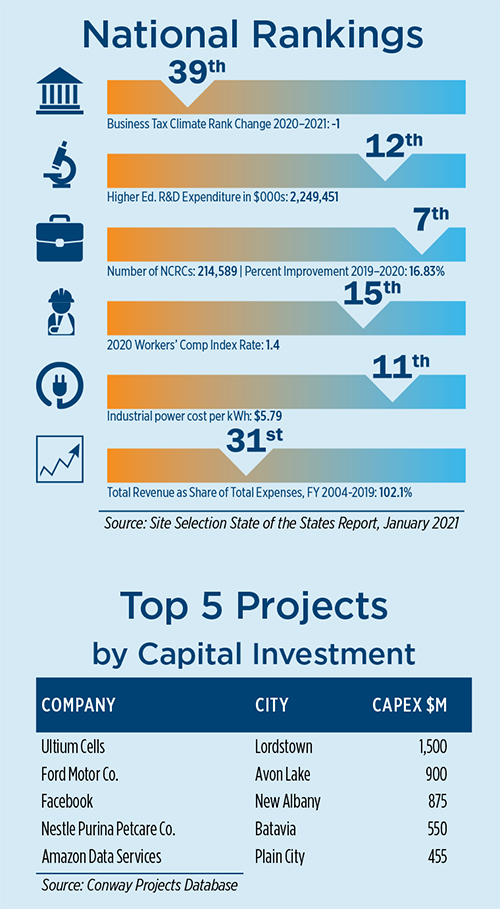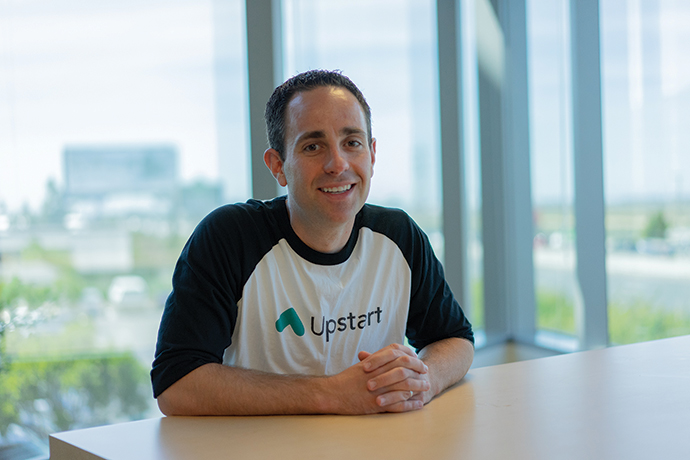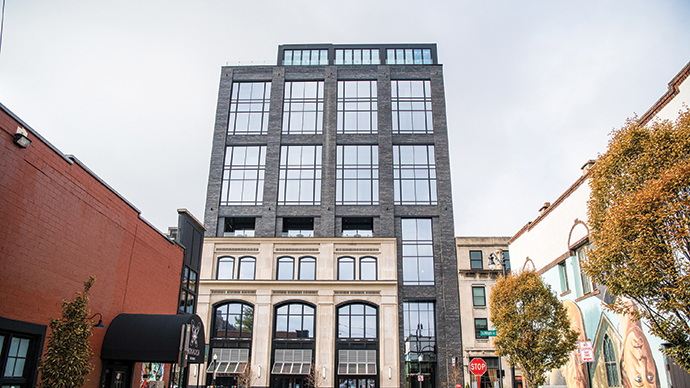Ohio native Grant Schneider ended up in the best of both worlds when he was tasked in 2018 with opening a second headquarters and R&D lab for his employer, San Mateo, California–based Upstart. Today, the online lending platform is rapidly occupying a new office building in Columbus’ Short North neighborhood and illustrating why an Ohio location is the perfect counterbalance to the FinTech player’s Bay Area base.
How is Upstart different than other online lenders?
“You are more than your credit score,” says Schneider, who is Vice President, Machine Learning and Head of Upstart Columbus. “We crunch the data, taking advantage of modern computing advances and artificial intelligence to construct a forward-looking risk assessment of the applicant. We’re taking the full picture into account, combining that with some non-credit data, such as employment and education information the user provides. It helps us understand not just past behavior, which every financial institution can look at, but what the future looks like. We ask about income, but we’re also asking about employment type and job title. Nursing is a good example of where salaries aren’t off the chart, but there is such demand for nurses that they can find a job anywhere in the country. We are able to offer better rates because of the stability of the industry.”
Upstart’s initial offering was a debt consolidation loan used mainly to pay off high-interest credit cards, says Schneider. “We recently launched an auto-refinance product where we can save the consumer a lot of money. It was about 90% built here in Columbus and served as a launch for us as an office, supporting the headquarters in California, but launching something new and sharing it with the world.”
Back to the Buckeye State
A native of southeast Ohio, Schneider spent 10 years at Ohio State University, where he earned a PhD and “lucked into finding this data science thing and lucked into finding Upstart as I was finishing up there,” he relates. “I went to Silicon Valley and loved it out there, but when it was time to buy a house, the Midwest looked pretty appealing. When the opportunity came up to open a second headquarters, I was really excited to go back to the Midwest. When we landed in Columbus, I couldn’t believe I still get to work for Upstart, and I get to live in Columbus. I never thought I’d get to do both at once.”

Why Ohio, and Columbus in particular?
“We wanted to find a place outside the Bay Area and combine the best of both worlds,” says Schneider, “maximizing the employment appeal to new hires. It wasn’t an abandon-the-Bay-Area situation.” An initial list of about 25 cities was winnowed down to Columbus and Chicago by November 2018. “We then did a deeper dive, looking at cost-of-living factors most companies look at, how many tech companies are there with open software engineering jobs and how many people have that in their title — it was a close look at supply and demand of technical talent. Also, would things really be better in a city like Chicago? That wasn’t the case. In terms of Columbus, the JobsOhio people were incredibly helpful, introducing us to the right people, going over tax incentives. It was refreshing, frankly, how much they were willing to do to help. It seemed like they really cared about what we were building. It mattered a lot to us when we were embarking on such an expansion.”
Upstart employs about 250 people in Columbus with plans to double that to 500. “That’s the next milestone we see, but we won’t stop there,” Schneider predicts. “The whole company is about 600 people today. I don’t think it will be too long before we’re the bigger office in terms of headcount. We’re quickly approaching the same size as the California office.”
Payroll tax credits are a key incentive for Upstart. “We commited upfront to a very specific 257 people over a certain number of years, and they would kick in,” says Schneider. “We passed that and had to re-up the agreement with the city and state to the 500-employee level. I think they were surprised to hear from us about that so soon. It turns out the first agreement wasn’t ambitious enough, even though it seemed so at the time.”
Where Workers Want to Work
Location really does matter, notes Schneider, and the booming payroll numbers bear that out. “We’re in the Short North Arts District, which is like Columbus’ eight blocks of New York City,” he explains. “It’s the hip, diverse arts area, where you would want to be early career, where you can enjoy life in the city. It was a choice between the Short North or Downtown. We’re in FinTech, but we’re a technology company first, and our building location and amenities are ideal. We originally took one floor of the building we’re in, and we just signed a deal to take three more. My sense is we’ll keep hiring and outgrow that space and need more. It’s a great office that overlooks all of Columbus, including the park where I proposed to my wife.”

Upstart finds a plentiful supply of workers locally from Ohio State University and other higher-education institutions, the city’s financial services sector and research labs, says Schneider. “We have also been able to attract folks from outside the area as well. In terms of the best of both worlds, one of the ways we’re able attract candidates is to offer them the Midwestern option and the Bay Area option. A hire might want to try one and later switch to the other. As we become a bigger and bigger employer in Columbus, I fear we may plateau and run out of people. We haven’t gotten there yet, but we have been investing in Columbus as a city and making sure we get folks here. Our biggest challenge pre-pandemic was getting candidates to come visit. There were perceptions we were battling and pre-conceived notions. But once they come and experience these ‘eight blocks of New York City,’ usually they’re blown away and it’s just a matter of passing the interview process. When we get them here to Columbus, they tend to fall in love with it.”
Schneider’s take on the state business climate is “amazing. You contrast it with some other cities where there is antagonism toward or vilification of business, and there’s genuine excitement about what we’re doing here and the job creation aspect of that. The taxes, the costs have been good, we haven’t run into too much regulation. We work with a lot of bank partners and that’s a very regulated area, but in terms of running the business, that’s not the case. There is a pro-active nature to it where I feel like different people in the city want to help us succeed without any direct benefit to them. Because of some of the excitement about what we’ve been able to do so far, we get to be on panels to tell our story, which is great. As an ecosystem in our area grows, we can only benefit from that.”


